If you are thinking about cloth diapering, here are five options to consider for different types of diapers.
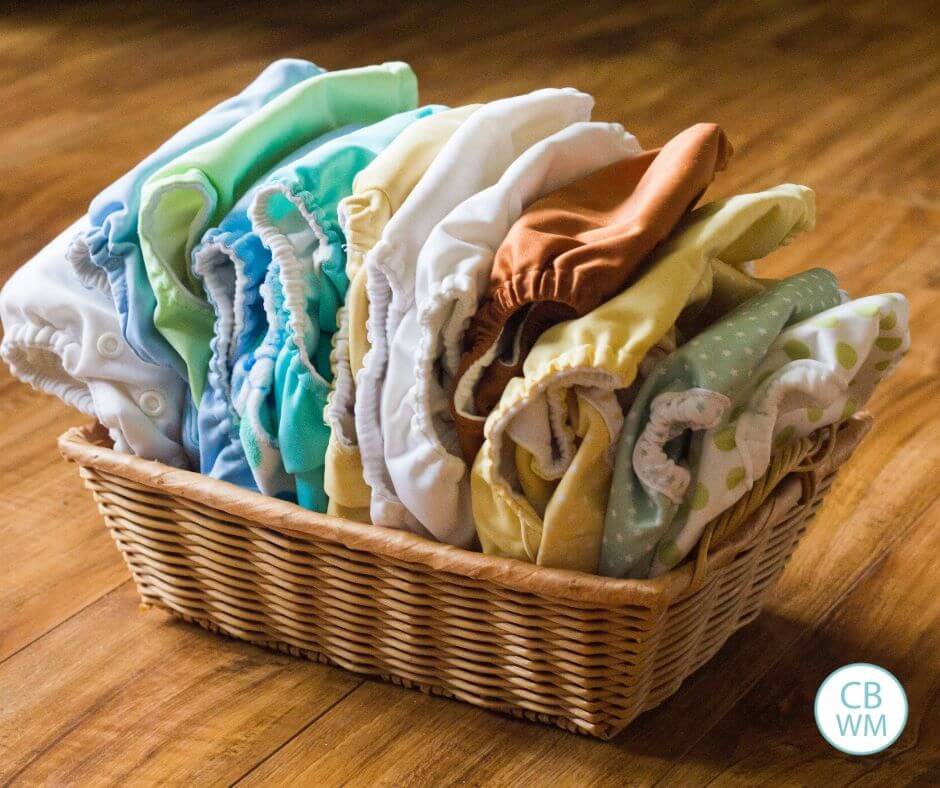
I am, have always been, and probably always will be a disposable diaper gal. That is the way I do it around here.
Despite that, I can see that there can be several benefits to cloth diapering, and I know several moms who use cloth diapers.
Whenever there is something going on that I don’t have experience with, I like to pull in another mom to shed some light on the topic. So, I asked my friend Amanda to write a cloth diapering post. And who knows; maybe one day I will switch over 🙂
You might recognize Amanda from the Children’s Learning Activities blog as she is one of the authors. Here are Amanda’s basic thoughts on cloth diapering:
~~~~~~~~~~~~~
In the Babywise books Gary Ezzo doesn’t really make any recommendations for how to diaper your baby; whether to use cloth diapers or disposable diapers. But of course you can’t be on an online parenting site for long before you run across that question: cloth or disposable? For different families the right answer could be either one, or something in between. Daycares often won’t accept cloth diapers, but for a stay at home mother cloth diapers can save some much needed money. Diapering twins with cloth could create a lot of laundry, but it could also save a lot of money and trips to the store. The water used could be nothing to a person in a wet climate, but after living in the Arizona desert I can understand not using more water than absolutely necessary too.
When I was pregnant my husband and I considered cloth diapers for a moment, and quickly dismissed the idea because of the time, cleaning, and hassle involved. Besides, I certainly did not want to mess with diaper pins and trying to fold a cloth diaper! Our son was in disposables for 3 months when the guilt of all that plastic, non-decomposing trash got to us. We were using 8-10 diapers every day, $40 a month, and emptying the small trash can daily just to keep up with the mess. We went through 4 kinds finding a style that didn’t leak or give our son a rash. So we decided to do some research into cost and options for cloth diapering. It turns out our idea of prefolds, pins, and plastic pants was way off the mark!
Currently there are several types of cloth diapers and cloth/disposable hybrids available.
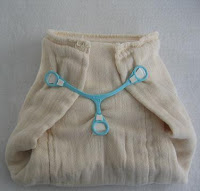
Prefolds
These are the least expensive option, easy to clean, but do require folding and securing with a snappi 


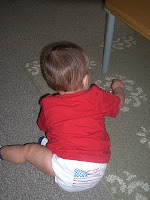
Read: A Case for Prefolds: Cloth Diapering at its Roots
Fitted Diapers
These 
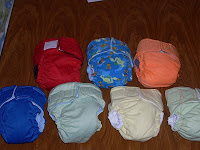
Pocket Diapers
These are more expensive than prefolds, a bit more difficult to clean, but are also much easier to put on and are more absorbent. These function just like a disposable diaper, velcroing in the front usually. Recently there are more versions with plastic snaps 
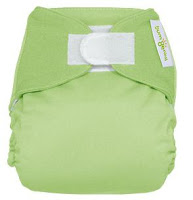
All-in-Ones
Similar in cost to pocket diapers, these 
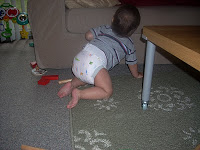
gDiapers
These 
Many people settle on pocket diapers because they are easy enough that babysitters can do diaper changes and are also fairly easy to maintain. For us, side-snapping pocket diapers are our absolute favorite. I learned to sew my own 2 months after we began using cloth diapers and so I can make a pocket diaper in 30 minutes with around $5 worth of materials.
Cloth diaper care takes a bit of learning but is easy once you have a method. We keep a covered trash can (dry pail) in the nursery and a covered trash can half-full of water and a scoop of oxyclean (wet pail) beside the toilet. When a diaper is wet it goes in the dry pail; if a diaper is dirty it gets rinsed over the toilet with a small diaper sprayer (a $40 attachment that took 5 minutes to install) and then tossed into the wet pail. Every 2-3 days we take both pails and empty them into the washer. I wash on cold with detergent and a cup of vinegar, then I wash on hot with nothing added. They then go in the dryer or out on the clothesline. When dry I spend 15 minutes stuffing the inserts into the pocket diapers and put them away in the drawers so they’re all ready to use.
I could list all the math involved in proving that cloth diapers save money, but that would make this post incredibly long! You’ll have to trust me, no matter which style you choose they do save money, even with a slight increase in water usage. If you don’t trust me then do the math yourself or do an online search. I could also get into the details of which is worse, the plastic of disposables in landfills or the water usage for washing cloth. For us, the plastic in landfills won out as the worse option, especially with our HE washer and since I like to line dry the diapers in the warm months. Also consider that the World Health Organization advises against human waste ever entering trash cans, instead advising that poop from diapers be disposed of in toilets—something cloth diapers ensure. Another small benefit in my opinion is that my 22 month old boy is almost potty trained, yay! 🙂 I’m not sure it’s entirely due to cloth diapering but I do think the cloth diapers helped with the awareness of wet vs. dry.
For me cloth diapers fit into our Babywise parenting philosophy. It’s all about planning for the future, looking at the long term benefit (cost or environment) instead of getting caught up in just making it through the day. It’s easier to let my baby sleep in our bed short-term, but long-term it could create a sleep disruption and a bad habit, so we did the hard work early on and now reap the rewards with a toddler who soothes himself to sleep easily. It was difficult to learn how to cloth diaper, invest in the diapers, and figure out how to wash them, but now we go months without buying any diapers and empty our son’s trash can once a week, not once a day. With a second baby on the way I don’t have to stock up on many diapers, we’ll be re-using many of my son’s cloth diapers for the new baby too. Like sleep training, I’ve found cloth diapers are a lot of work in the beginning, and then make life easier later.
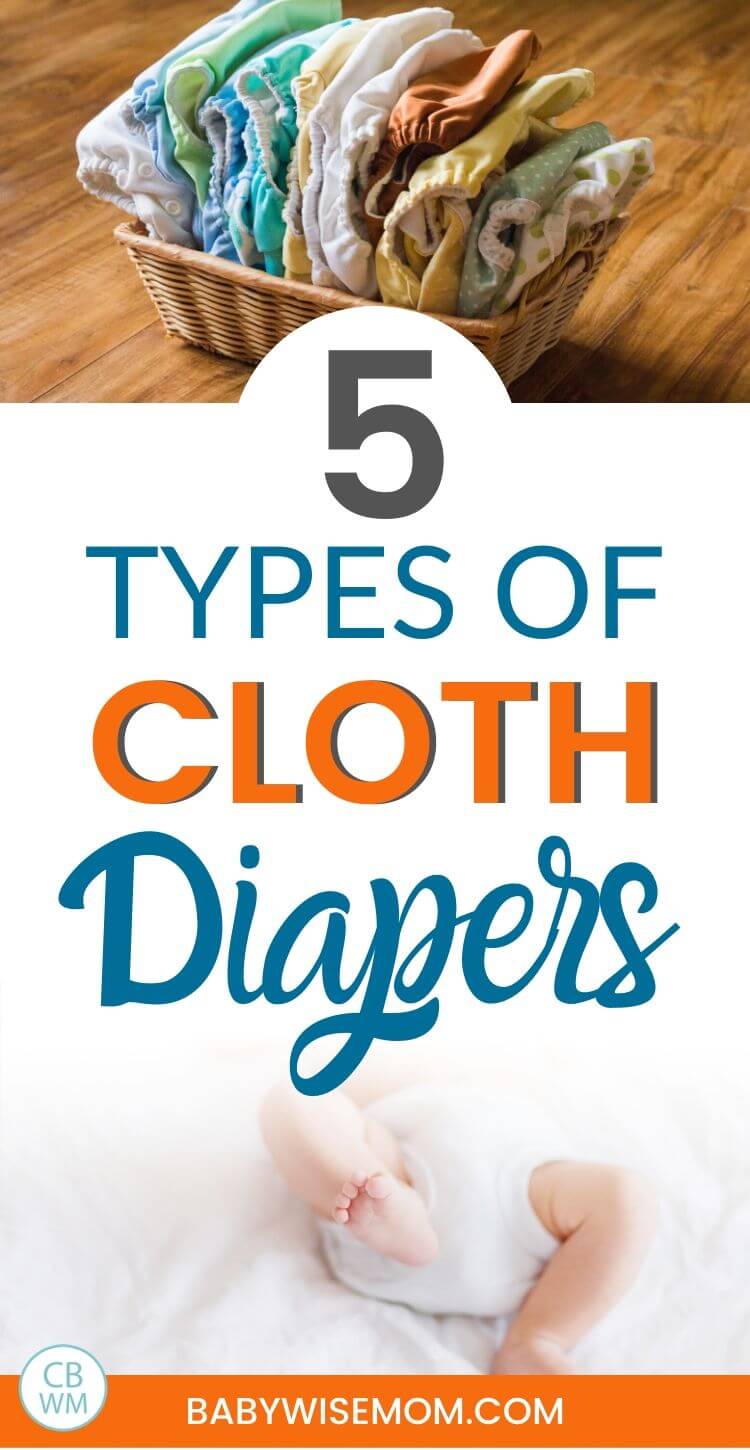
Conclusion
If you have any experience you would like to add on the topic of cloth diapering, please feel free to add it in the comments!


